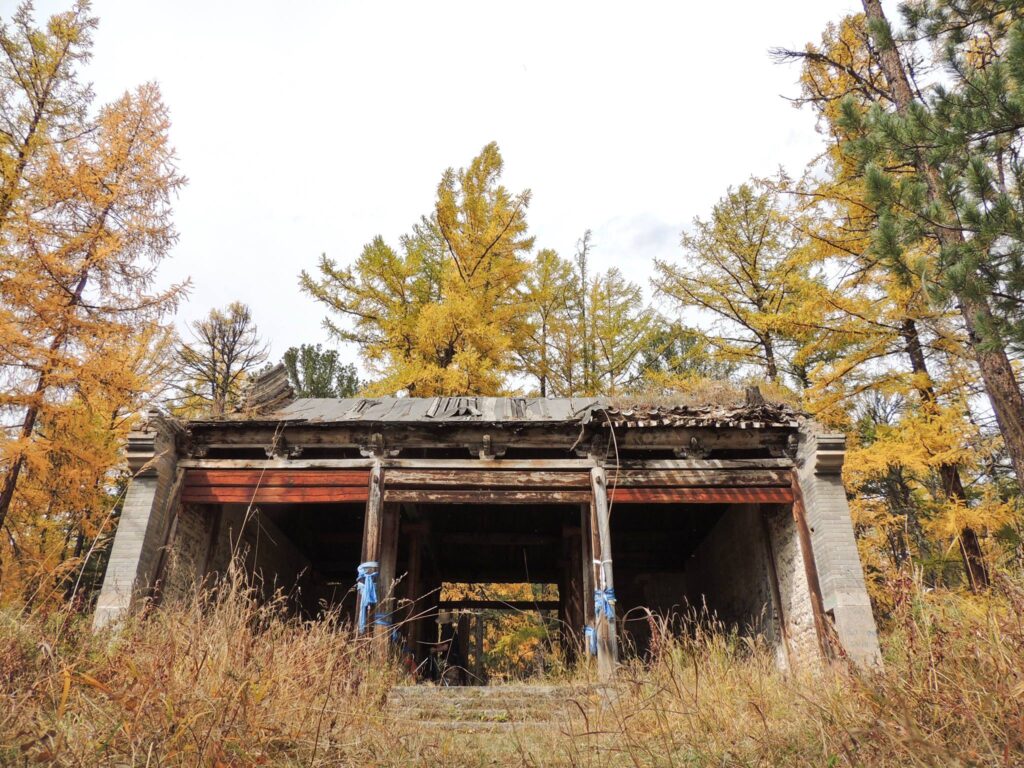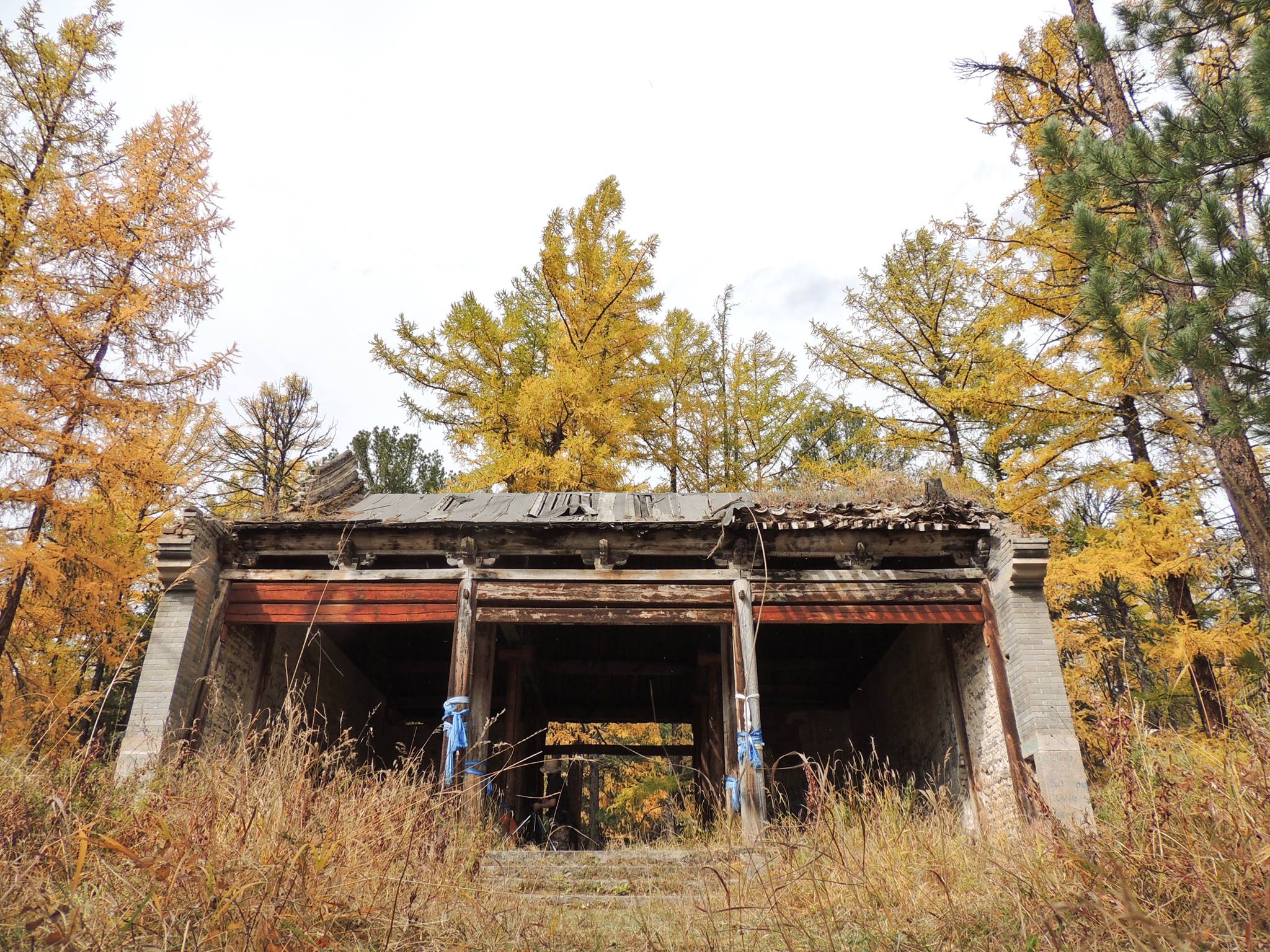Located approximately 120 kilometers east of Ulaanbaatar, Gunj Temple is situated in the Khan Khentii Strictly Protected Area. To reach it, one must travel through the Gorkhi-Terelj region and cross the Terelj River heading northeast. Ascending the marshy terrain to the east of Baruunbayang leads to a cluster of rocks known as Khukh Chuluut. Just past these rocks lies a forested area covered in dense woods. The surrounding landscape is strikingly beautiful, encircled by pine forests.
In 1699, a princess of the Manchu Qing Emperor was sent to Mongolia to marry a nobleman of royal descent named Dondovdorj. She passed away around the year 1740. In her will, she expressed:
“I have lived my entire life with a Mongol husband and have become Mongolian myself. Therefore, I wish to be buried in Mongolian soil.”
Her attendants, known as members of the Sönchin clan, continued to protect her burial site for generations. Until 1930, her tomb remained untouched and considered sacred ground.
It wasn’t until the winter of 1948 and the summer of 1949 that the site was first excavated by researchers, who discovered that it had already been looted. The remains of Gunj Temple consist of six main parts: a stone monument, protective structures around the grave, the Bogd Gate, defensive walls, the mausoleum itself, and the burial site. The princess’s tomb lies within the mausoleum compound, which is surrounded by an inner wall enclosed by a larger outer wall.

The defensive wall is 2.5 meters high, measuring 70 meters in both width and length, covering a total area of 4,900 square meters. The wall is thick enough to accommodate four bricks laid side by side. Inside the enclosure, on the southern side, stands the Bogd Gate — 10 meters high and 6 meters wide, supported by several columns.
Gunj Temple is built near this gate in a square shape with a passage running from north to south. The princess’s tomb is situated at the rear of the mausoleum. During excavation, it was revealed that underneath the southern tomb lay a marble chamber. This structure features a stone floor and an arched wall constructed with eight layers of bricks. The chamber lies 3–4 meters below ground level, where a coffin made of sandalwood was found. Coated in resin from coniferous trees and wrapped in nine layers of silk, the coffin was opened, only to reveal that no trace of the princess’s remains had survived. To this day, the whereabouts of her remains remain unknown.
According to local elders, the sandalwood coffin was once covered in gold, with miniature gold and silver figurines, representations of five kinds of livestock, and intricately carved gemstones inside. Interestingly, another tomb was discovered to the west of the princess’s grave. Inside it was the body of a plump man, buried in a seated position, cross-legged. Due to the frozen condition of the body, it appeared to have died recently. The coffin was wrapped in seven layers of silk, and inside were toy-like tools such as an axe, saw, hammer, chisel, and shovel. The identity of this person remains unknown, but the tomb had remained untouched and preserved.
Another notable relic within Gunj Temple is a stone turtle statue facing southward. Made of granite, it measures 1.95 meters in length and bears a stone tablet on its back. The top of the tablet features two dragons, and the inscription is written in both Manchu script and Chinese characters. It reads:
“In honor of a loyal subject of the Great Qing Empire…”
and
“…this monument was erected in celebration.”
Many accounts related to this Qing princess have been recorded in historical texts. Scholars have noted that she strictly followed the customs and duties of a Mongolian wife. “She rose early, slept late, followed dietary discipline, and adhered strictly to both the Qing court’s teachings and Mongolian household traditions.”
Her husband, Tüsheet Khan Dondovdorj, was a descendant of Avtai Sain Khan. He was a well-educated man, admired for his poetry and literary talent. The princess and Dondovdorj had seven sons, including Khajivdorj, Rinchendorj, and Gejaidorj. Dondovdorj is also believed to have had another wife, who later became the queen of Bayart Gun of the Khalkha Khotgoid. It was during this union that the second Bogd (spiritual leader of Mongolia) was born.
Despite the hardships she faced in Mongolia, the Qing princess who became a Mongol noblewoman remained loyal to her husband and lived a life of devotion, ultimately earning her a lasting place in Mongolian history.
